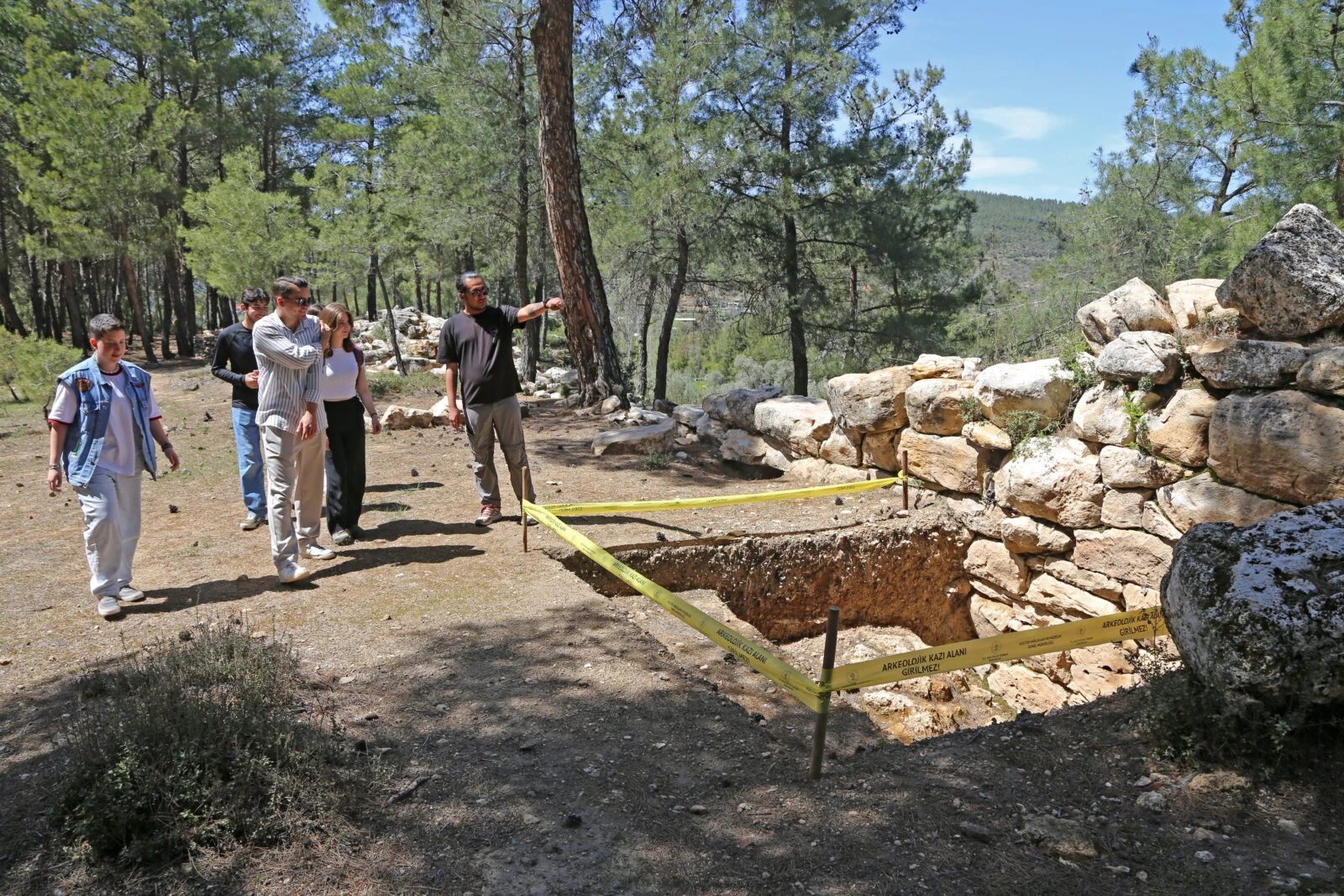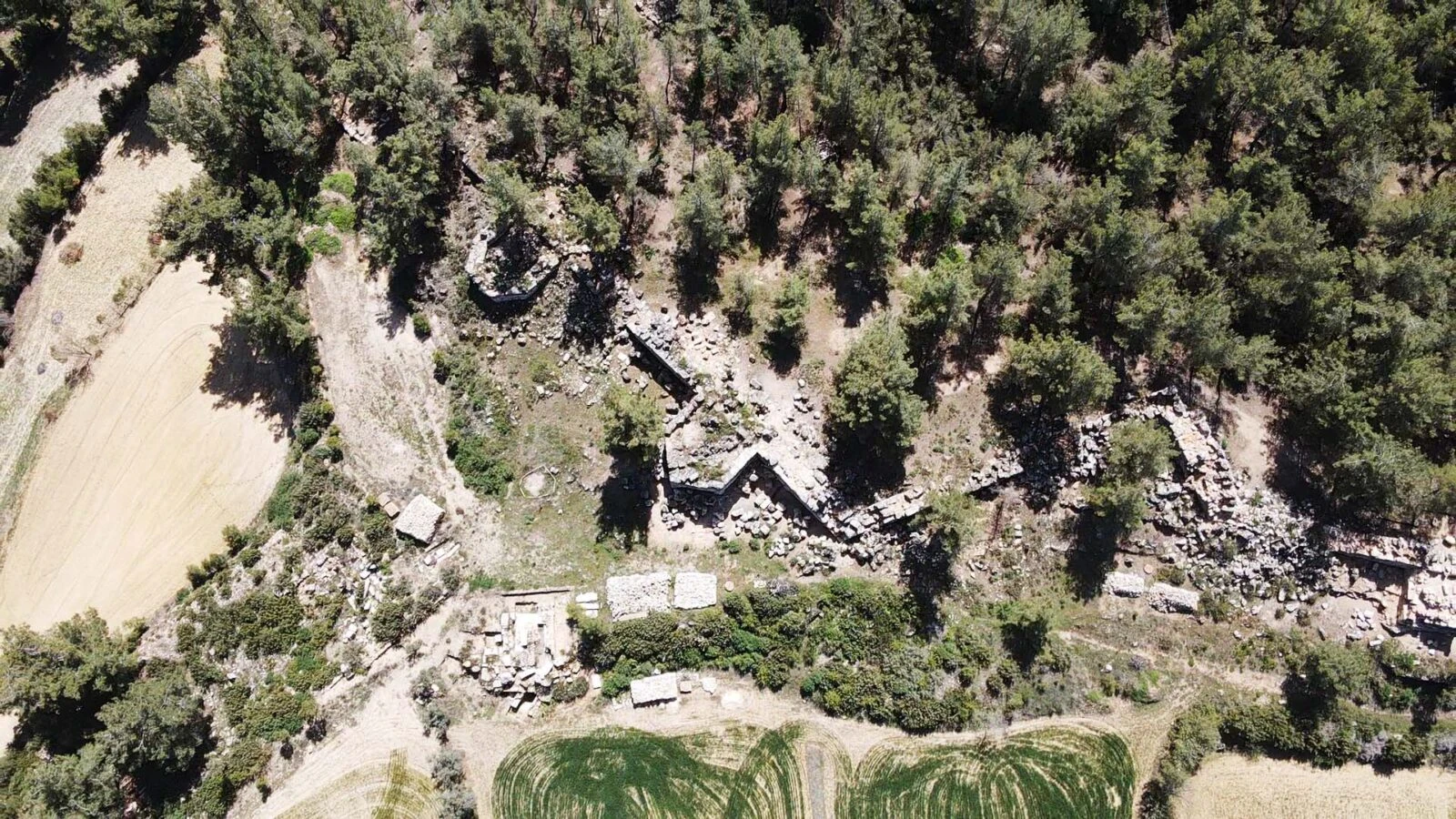Restoration of Hyllarima’s ancient fortress walls to boost tourism in Mugla
 An aerial view shows part of the 2-kilometer-long city walls of the ancient city of Hyllarima in Kavaklidere, Mugla, Türkiye, April 21, 2025. (AA Photo)
An aerial view shows part of the 2-kilometer-long city walls of the ancient city of Hyllarima in Kavaklidere, Mugla, Türkiye, April 21, 2025. (AA Photo)
The ancient city of Hyllarima, nestled in the Derebag neighborhood of Kavaklidere in southwestern Türkiye, is set to become a new hotspot for cultural tourism. Authorities are preparing to restore the city’s nearly 2-kilometer-long defensive walls, which date back to the Classical, Hellenistic, and Roman periods.
Home to a wealth of archaeological treasures, including a theater, council house, and agora, Hyllarima was one of the most strategically significant settlements in the inland region of ancient Caria.

A fortress on stone
Perched atop a high rocky massif, Hyllarima served as a vital defensive position against inland and coastal threats throughout Anatolian history. Excavation Director Professor Bekir Ozer explained to Anadolu Agency that archaeological and historical evidence of the city’s importance stretches back as far as the Hittite era.
“When the inhabitants decided to move the city from Asar Tepe in the 4th century B.C., they envisioned a well-fortified settlement,” said Ozer. “Our excavations show that the construction of the walls began in the 4th century B.C. and continued into the early 3rd century B.C. In some sections, particularly the eastern half, the walls still stand up to 4 to 5 meters high, complete with towers and other defensive features.”

A city built with Hyllarima’s local stone
The restoration project will carefully preserve the original construction materials used in the city’s fortifications. According to Ozer, builders in antiquity chose their stones based on proximity to the marble quarries and natural rock formations surrounding the site.
“In the eastern part of the city, close to marble sources, the foundations were laid with marble blocks,” he said. “Elsewhere, they used stones cut directly from the bedrock beneath the city. These stone materials are not just functional; they give Hyllarima its unique identity. In fact, the quarries they opened often became part of the city’s streets, workshops, and living spaces.”

Preserving history while sparking imagination
The restoration work will be sensitive to the original structures. “We plan to restore certain towers and wall sections, while leaving others as they are—collapsed and untouched,” Ozer said. “This approach will help visitors use their imagination and better visualize the ancient city’s original form.”
Hyllarima is also distinguished by its well-preserved street lines from the Hellenistic and Roman periods, many of which are still visible without excavation.



